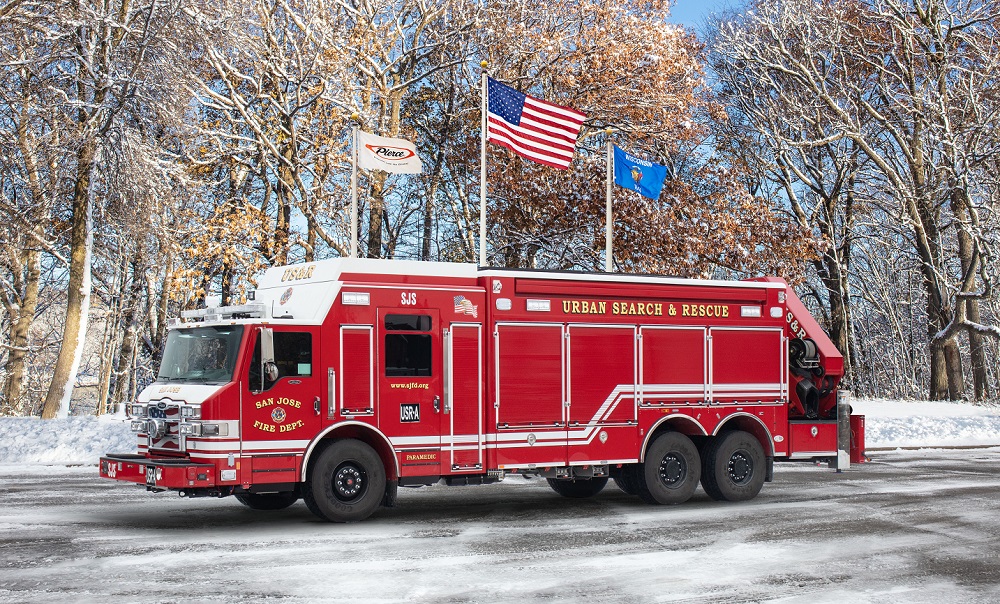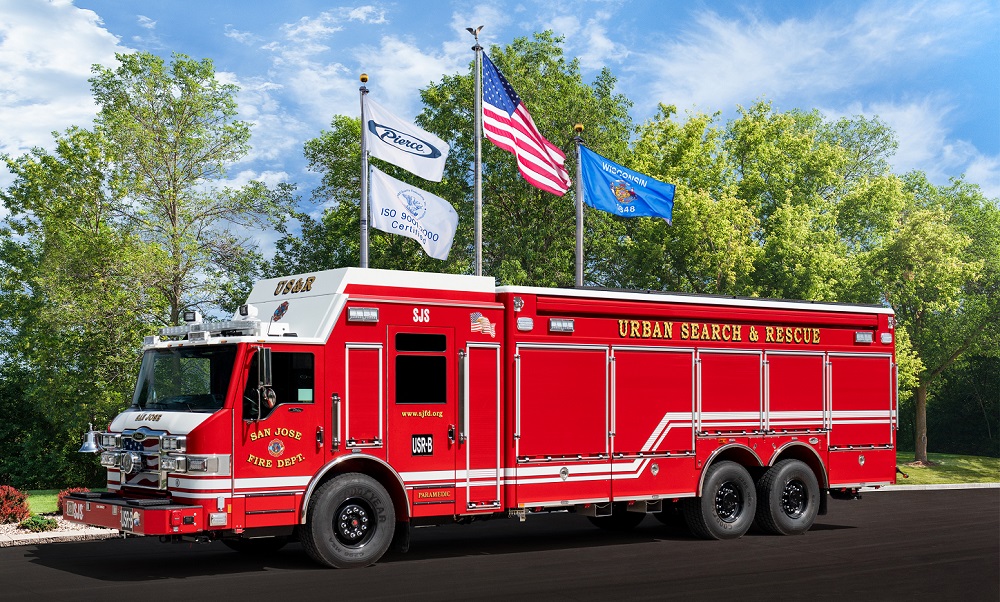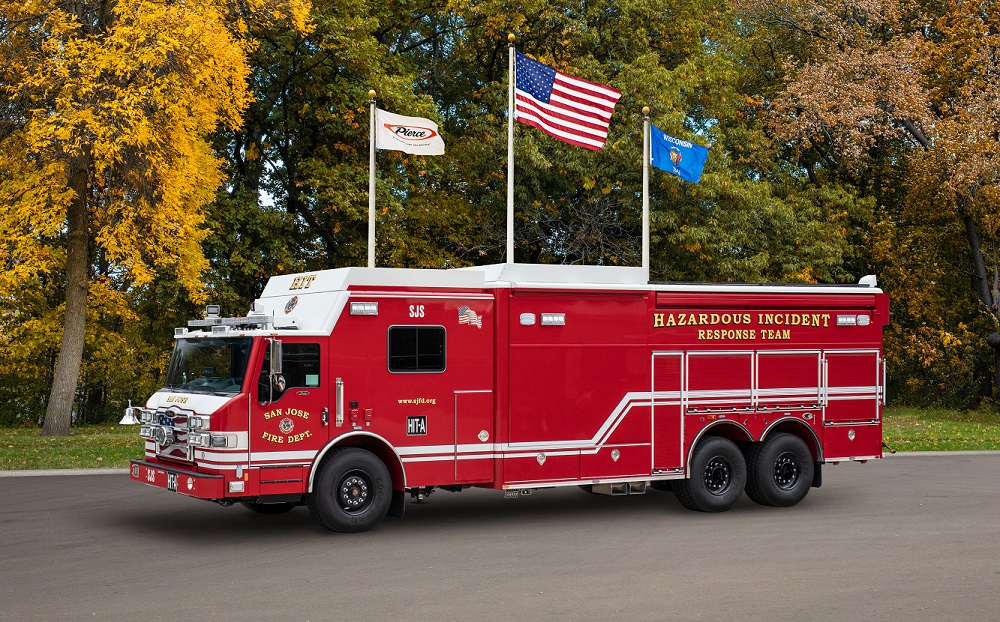The San Jose (CA) Fire Department (SJFD) has taken delivery of three Pierce Manufacturing heavy rescue trucks: two set up as urban search and rescue (USAR) rigs and the third as a hazardous materials response truck.
All three rescues are built on Pierce’s Velocity® chassis and cab, with TAK-4® independent front suspension and TAK-4 T3™ rear steer independent suspension, powered by Cummins 600-horsepower (hp) X15 diesel engines and Allison 4000 EVS automatic transmissions, with Command Zone™ electrical systems.

Joe Crivello, SJFD’s battalion chief and USAR program manager, says San Jose’s USAR Rescue A (USR-A), housed in Station 34, carries an Iowa Mold Tooling crane with a 25-foot boom that’s capable of a lift of up to 13,073 pounds at full extension and 22,840 pounds up close. “There are two H-style outriggers on the truck that allow the boom its maximum reach of 25 feet,” Crivello points out. “We can use the boom as an anchor point for low-angle rescue; from above when on an overpass; or to perform a high lift on an unstable motor vehicle or structure, trees, or heavy debris. This boom meets the needs of some challenging calls that we’ve had in the past.”
Paolo Brito, a SJFD firefighter and rescue specialist, says that San Jose’s USR-A functions pretty much as a traditional rescue truck but with the addition of the knuckle boom at the rear. “It’s set up for motor vehicle rescues, technical rope rescues, and water rescues; basic life support emergency medical services; and basic truck operations, and it carries a full complement of rescue tools, including a 13-foot long rigid hull inflatable boat,” Brito notes. He also points out that the second heavy rescue SLFD got from Pierce, designated USR-B, “Is set up to augment USR-A and function more as a traditional USAR vehicle. The equipment it carries is set up to handle technical rescues for motor vehicle accidents; emergency building shoring, breaching, and breaking any type of construction material; trench or confined space rescue; truck operations; ground ladders; ventilation; and advanced life support emergency medical services. He notes that, together, both USARs are California Governor’s Office of Emergency Services Type 1 heavy rescues.

Crivello adds that the two USAR trucks have Atlas Copco high-pressure air compressors for air bags and impact tools, and that all three vehicles carry Will-Burt Night Scan light towers with six Whelen PCP2 LED light heads and Whelen PCP2 LED combination spot/flood scene lights around the rigs’ perimeter.
Chuck Wise, SJFD’s hazardous materials engineer, says the department wanted the hazardous materials truck to be consistent with the two other rescues in terms of chassis, cab, and lighting options, but that it would have a walk-in body instead of the walk-around bodies on the two USAR trucks. “On the hazmat truck, we have a working lab inside that’s isolated with separate fans to control contaminants,” Wise says. “There’s also a command module with two Apple Macintosh computers connected to a router so we can look up facilities and data on the way to a call. The rig also has a 35-foot mast with a digital video camera at the top to survey scenes and a pair of leveling jacks to keep the camera steady.”

Wise notes that the SJFD hazmat truck has fold-out awnings on both sides, as do the two USAR trucks, but it includes a slide-out monitor where the hazardous materials commander can put up the hazmat plan so the crew can see and digest it. “We have a stairway at the back of the truck so we can access the equipment in coffin compartments on the top,” he adds. “We have a Vanair 185-cubic feet per minute air compressor, as does USR-B.”
Crivello points out that the department received the three trucks in the summer of 2020. “They have been performing great for us,” he says. “They are big rigs but handle unbelievably well and maneuver well through intersections, especially because of their TAK4 T-3 rear steer independent suspension. All our firefighters are very pleased with the vehicles.”
ALAN M. PETRILLO is a Tucson, Arizona,-based journalist, the author of three novels and five nonfiction books, and a member of the Fire Apparatus & Emergency Equipment Editorial Advisory Board. He served 22 years with the Verdoy (NY) Fire Department, including in the position of chief.

